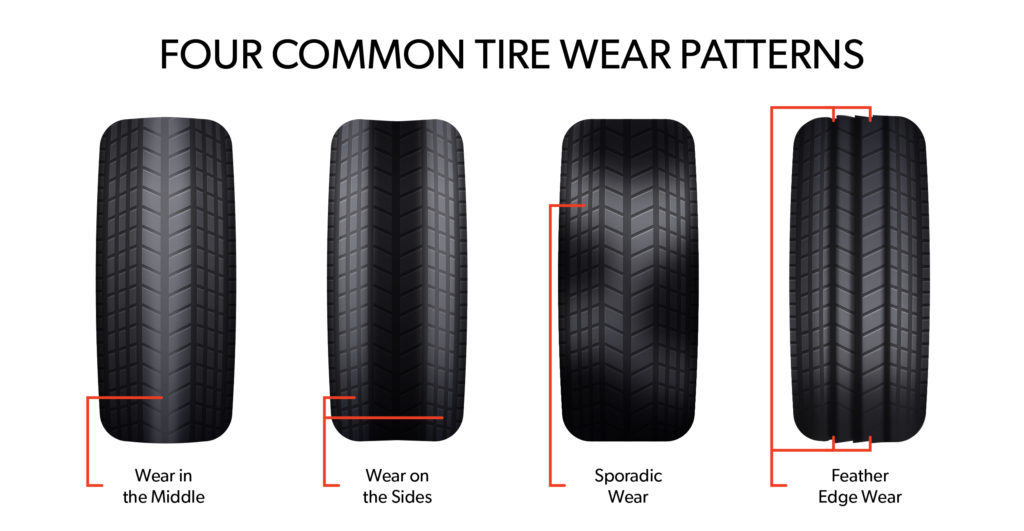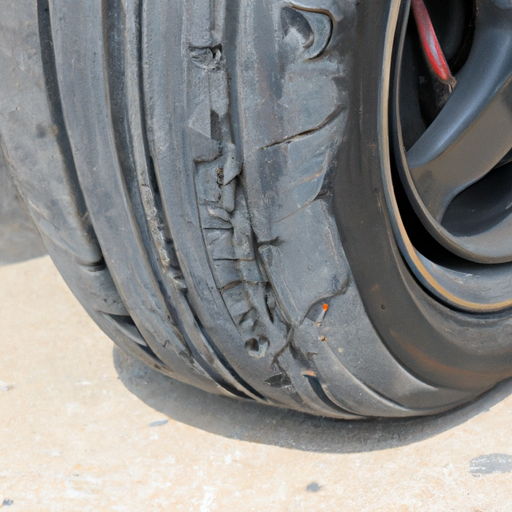Are you tired of the hassle and inconvenience of dealing with low tire pressure? Don’t worry, because you’re about to learn the foolproof method for quickly and accurately identifying which tire is low. In this guide, we will walk you through the step-by-step process of determining the culprit behind your deflated tire, enabling you to take prompt and effective action. So, whether you’re a seasoned driver or a newbie behind the wheel, get ready to save time, money, and frustration by mastering the art of identifying a low tire.
Imagine this scenario: you’re preparing for a long-awaited road trip, but as you approach your vehicle, you notice that one of the tires seems slightly deflated. Panic sets in as you wonder which tire is causing the issue and how to fix it. The good news is that you don’t have to be a car expert to solve this mystery. With a few simple techniques and a keen eye, you’ll be able to pinpoint the problem tire in no time. So, grab your notepad and get ready to become a tire pressure detective as we delve into the world of identifying low tires.
How to Tell Which Tire Is Low:
- Start by visually inspecting all four tires for any signs of deflation or damage.
- Use a tire pressure gauge to check the air pressure in each tire.
- If the pressure readings differ, the tire with the lowest pressure is likely the one that is low.
- Alternatively, you can also use the “penny test” by inserting a penny into the tire grooves. If the top of Lincoln’s head is visible, the tire may be too low on tread.
 Source: telletire.com
Source: telletire.com
How to Tell Which Tire is Low
Having properly inflated tires is essential for both your safety and the performance of your vehicle. If you suspect that one of your tires is low on air pressure, it’s important to identify which one it is so you can address the issue promptly. Here is a step-by-step guide on how to tell which tire seems low:
Step 1: Visual Inspection
The first step in determining which tire become low is to visually inspect all four of your tires. Look for any obvious signs of deflation such as a visibly flat tire or one that appears noticeably lower than the others. Thoroughly examine the sidewalls and treads of each tire to check for any punctures, cuts, or bulges. Additionally, inspect the valve stems to ensure they are intact and not leaking air. If you notice any abnormalities, it could indicate a problem with that particular tire.
After visually inspecting the tires, you can also run your hand over each tire’s surface to feel for any irregularities. A tire that is significantly softer or less inflated than the others may indicate a low tire pressure issue. However, keep in mind that this method may not always be accurate as variations in tire temperature and wear can affect the feel of the tires.
Step 2: Tire Pressure Gauge
If the visual inspection doesn’t clearly indicate which tire going to be low, the next step is to use a tire pressure gauge. Start by acquiring a reliable tire pressure gauge from an automotive store or online. Remove the valve cap from each tire one at a time and firmly press the gauge onto the valve stem. The gauge will provide a reading of the current tire pressure.
Compare the readings with the recommended tire pressure specified by the vehicle manufacturer. Typically, this information can be found in the owner’s manual, on a sticker inside the driver’s door jamb, or on the sidewall of the tire itself. The tire with a significantly lower pressure reading compared to the others is likely the one that is low on air.
Step 3: Inflation Check
Once you have identified the tire that is low on air, it’s time to inflate it to the correct pressure. You will need an air compressor or access to a gas station with an air pump. Remove the valve cap from the low tire and attach the air hose securely onto the valve stem. Add air in short bursts, periodically checking the pressure with the tire’s gauge. Be cautious not to overinflate the tire, as this can lead to other issues.

After inflating the low tires to the recommended pressure, recheck it with the tire’s pressure gauge to ensure it matches the desired value. Once all tires are properly inflated, replace the valve caps and give each tire a final visual inspection to ensure they all look evenly inflated. Regularly checking and maintaining the correct pressure will contribute to a safer and more efficient driving experience.
By following these steps, you can easily determine which tire is low on air pressure and take the necessary steps to address the issue. Remember to periodically monitor your tires pressure and maintain the recommended levels to ensure optimal performance and safety on the road.
Frequently Asked Questions
Here are some commonly asked questions about how to tell which tire is low.
Question 1: How can I determine which tire is low on air pressure?
When it comes to identifying a low tire, the first step is to visually inspect all four tires. Look for any noticeable signs of deflation, such as a visibly sagging tire or a significantly lower tire compared to the others. If there are no visible signs, you can use a tire’s pressure gauge to measure the air pressure in each tire. Compare the readings to the recommended air pressure indicated in your vehicle’s owner’s manual or on the inside of the driver’s side door frame.
If there is a significant difference in the air pressure readings between the tires, the one with the lower pressure is likely the culprit. Keep in mind that tire pressure can fluctuate due to temperature changes, so it’s important to measure the pressure when the tires are cold.
Question 2: Can I rely on the tire pressure monitoring system (TPMS) to identify a low tire?
Most modern vehicles come equipped with a tires pressure monitoring system (TPMS), which alerts you when one or more tires have low air pressure. The TPMS uses sensors inside each tire to monitor the air pressure and sends a warning signal to the dashboard if it detects a significant drop in pressure.
While the TPMS can be a helpful tool, it is important to note that it may not always provide accurate information. Factors such as sensor malfunctions or battery failures can result in false readings or no readings at all. Therefore, it is recommended to visually inspect the tires and use a tires pressure gauge for a more accurate assessment.
Question 3: Are there any physical signs that indicate a tire is low on air?
Yes, there are several physical signs that can indicate a tire is low on air. One common sign is a visibly sagging tire, where the sidewall appears to be bulging or deflated. Another sign is uneven tire’s wear, where one tire may have more wear on the edges compared to the others. Additionally, if you notice a decrease in vehicle handling or if the steering feels off-center, it could be a sign of low tires.
It’s important to note that these signs may not always be present, especially if the tire is only slightly low on air pressure. Regularly checking the tire’s pressure using a gauge is the most reliable method to ensure optimal tire performance.
Question 4: Can tire’s pressure vary depending on the weather conditions?
Yes, tire’s pressure can vary depending on the weather conditions. As the temperature fluctuates, the air inside the tire expands or contracts, leading to changes in tires pressure. In colder temperatures, the air inside the tire’s contracts, causing the tire pressure to drop. Conversely, in hotter temperatures, the air expands, resulting in an increase in tire pressure.
It’s important to regularly check and adjust the tires pressure according to the recommended levels provided by the vehicle manufacturer, especially during extreme temperature changes. This helps to maintain proper tires performance and prolong tire’s life.
Question 5: How often should I check the tire pressure to ensure they are properly inflated?
It is recommended to check the tires pressure at least once a month, as well as before long trips or when experiencing significant temperature changes. Regularly checking the tire pressure helps to ensure that the tires are properly inflated, which can improve fuel efficiency, extend tires life, and enhance vehicle safety.
Using a reliable tire’s pressure gauge and referring to the recommended air pressure levels provided by the vehicle manufacturer are essential for accurate readings and optimal tire performance.

Source: wikihow.com
Ask Ashley | Low tyre pressure? How can you tell?
In conclusion, understanding how to identify a low tire is a crucial skill for any driver. By paying attention to the warning signs and performing regular visual inspections, you can promptly detect a low tire and take appropriate action. Remember to check the tire pressure regularly using a tire pressure gauge and maintain proper inflation levels as recommended by the vehicle’s manufacturer. Additionally, be aware of any unusual vibrations or noises while driving, as these may indicate a potential problem with the tires. By prioritizing tires maintenance and being proactive in addressing any issues, you can ensure a safe and smooth driving experience for yourself and your passengers.
Overall, being able to tell which tire is low is an essential aspect of vehicle maintenance. It not only helps prevent potential accidents and breakdowns but also contributes to optimal fuel efficiency and tire’s longevity. By following the tips and techniques outlined in this guide, you can confidently identify a low tire and take the necessary steps to rectify the situation. Remember, a well-maintained and properly inflated set of tires is not only crucial for your safety on the road, but it also promotes a more enjoyable driving experience. So, stay vigilant, stay informed, and stay safe on the road.
- How Much Does a Ford 9N Tractor Weigh - May 20, 2024
- How Many of My Exact Car were Made: Uncovering the Rarity - May 20, 2024
- How to Find Out What Someone Drives: Discover the Truth - May 20, 2024
